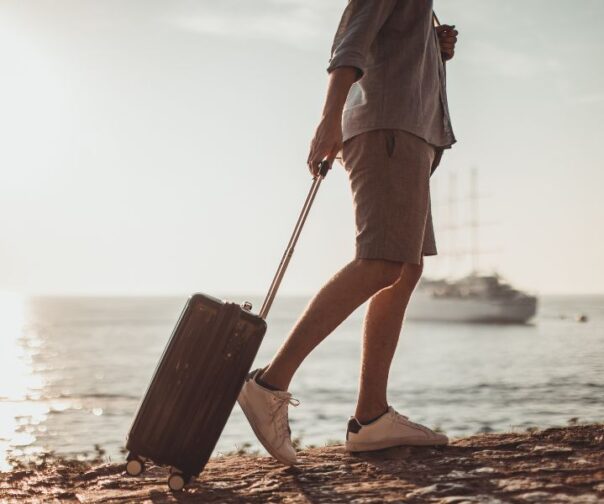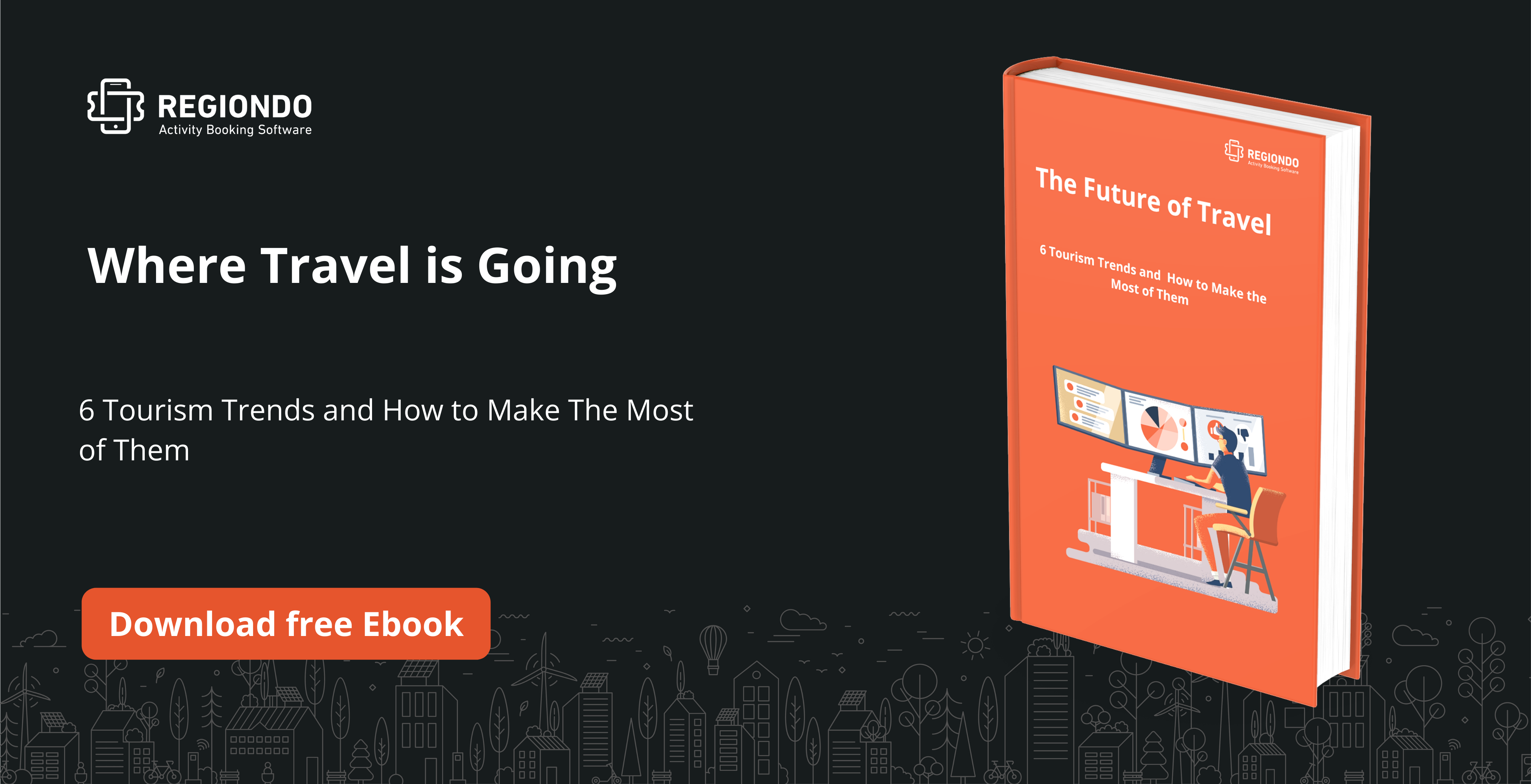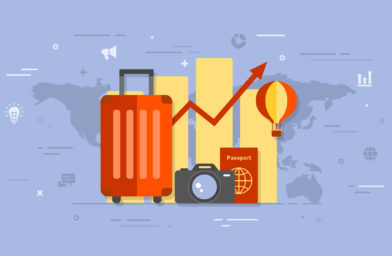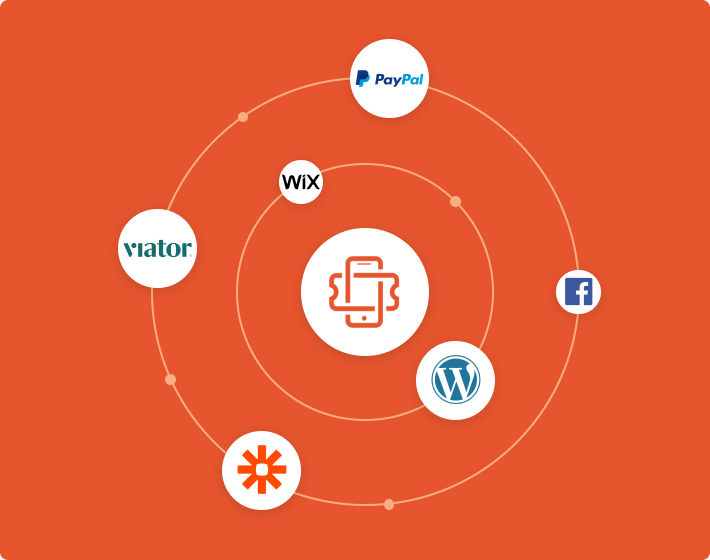Over the last few years, there’s been a growing trend around business travel. People are starting to mix their work trips with leisure, also known as bleisure travel.
This trend presents a new opportunity for tour and activity providers. The growing bleisure segment largely consists of both millennials and more experienced travelers. Both groups have their own purchasing habits, different from the typical tourist.
By reaching them at the right place and time with special offers, you gain an advantage over competitors. In addition, the opportunity to boost your referrals and positive reviews online can have a long-term impact on your business.
In this post, we’ll suggest the best ways to reach bleisure travelers and tailor your deals for them. But first, we need to look at what exactly bleisure is and what characterizes bleisure travelers. This way, we’ll get a better understanding of the trend.
Ready? Let’s dive in.
What is bleisure?
Bleisure is a mix between “business” and “leisure”. It means combining work trips with fun activities while abroad. In simple terms, bleisure mixes business travel with entertainment.
This travel style is getting more common according to studies. Consider this data quoted by Forbes:
- 78% of millennials intentionally add personal time on a business trip (source: Chase)
- 57% of companies have a policy for young employees to extend business trips with vacation time (source: AMEX Global Business Travel)
- 74% of frequent business travelers wish their corporate travel policy included a budget for entertainment (source: Swapnil Shinde, Co-Founder and CEO of Mezi)
And while normal business trips last 2 days on average, bleisure travels can often be 6 days long or more.
Not only do the stats back it up, but many companies see considerable effects from bleisure travel on their bottom line. For example, travel agency CheapOair reports over 20% annual revenue growth in bleisure travel for the last 3 years straight.
There are many reasons bleisure travel is on the rise. To start with, it’s beneficial for employee satisfaction and it costs next to nothing for employers. Tickets are often cheaper when you stay over Saturday. This means companies don’t spend much extra while improving staff morale and attracting better talent. In fact, Booking.com suggests that 30% of people would accept a job with a lower salary if it offers more business trips.
Aside from offering cheaper plane tickets, airlines, and travel agents encourage bleisure through their sales and marketing. This is no surprise – they also get extra revenue through referral fees and longer stays.
In addition, more and more companies are ditching the office and work remotely, making it easier to work and travel for fun at the same time. This is magnified by freelancers and indie entrepreneurs who travel almost full-time, also known as “digital nomads”.
If that’s not enough to prove bleisure is a thing, consider apparel startup Par en Par which creates clothing specifically for bleisure travelers.
Who are bleisure travelers?
According to the CWT survey, bleisure travel is common among millennials aged 25-34. However, the second largest group are middle managers aged 36-54 with average annual incomes close to $80,000. They most often come from the tech industry and represent a lucrative segment overall.
Sometimes it could be a full team retreat where all employees in a company meet in a single location for a few days or weeks of work and fun. Bleisure travelers are typically male, with a US study suggesting that men take more work-related trips (70% male vs 30% female). For a full profile of bleisure travelers, you can also check out this research summary by Altexsoft.
Reaching bleisure travelers
As you can see, bleisure presents a new, lucrative, and growing market segment to target. Considering bleisure travelers in your offerings and marketing communication can give you an advantage over competitors. Not just in terms of revenue, but also valuable referrals and online reviews leading to a long-term benefit for your business.
So how do you capitalize on this opportunity? By knowing who bleisure travelers are and what they want, you can reach them at the right time and place with high-value, tailor-made offers. Following are some of the best ways to target bleisure travelers based on their profile and purchasing habits.
Travel agents and related businesses
You can advertise on travel agent networks so bleisure travelers see your offer while booking a trip. You can also partner up with related businesses like co-working spaces, transport, and even restaurants. This way you can delight your bleisure customers while getting referrals and new business relationships.
Did you know Regiondo partners with 150+ travel agents so you can get your offer in front of millions of people each month? Try our booking software for free and see what you can achieve with such a vast distribution network.
Content marketing
You can also create special content offers for bleisure travelers. What are the things they need to know about your city? What are the best places to stay? The coffeeshops with the fastest wi-fi? The most convenient office spaces? If you pop-up in Google while they do their research, it’s more likely that they’ll try your tour or activity and even get on your email list. This leads to the next good way to reach bleisure travelers:
Email newsletters
If you do your research well, you can find a number of companies with dedicated bleisure policies for their employees. You might even find out if they have a client in your location that they visit often. This is especially relevant if you’re based in a large financial or business center. Find out which companies allow and encourage their employees to mix business trips with some fun. Then offer them a special newsletter with discounted packages. You might just get a spotlight feature every time someone in the company is coming your way.
Networking events
You can also stay on top of relevant networking events and promote them in exchange for a mention as a sponsor. And if you have the capacity, why not organize an event yourself? This way you can raise awareness among both local businesses and international travelers.
If you’re in a location that’s popular with digital nomads, you can create a special event that can result in substantial referrals later. There are many digital nomad online groups where people exchange recommendations for places around the world.
Partnerships
You can also partner up with some loyalty programs, even credit cards if you’re lucky. Frequent travelers will often amass points so they might as well spend them on your tour or activity.
Highly targeted advertising
You can advertise on specialized blogs for bleisure, such as the Tagalong Traveler. Other channels are Facebook and especially LinkedIn, which allows you to reach people with specific job titles. Professional groups and forums online can also be a good way to get your tour or activity in front of a relevant bleisure audience.
Adjusting your offers for bleisure travel
Now that you know how to reach bleisure travelers, what are the offers that they are most receptive to?
Special discounts
Being millennials and digital nomads, bleisure travelers are often price sensitive. Adding juicy discounts and coupons can be a great way to entice them to come along and try out what you have to offer. If you’ve already set up your online shop with Regiondo, here’s a guide to creating your first discount code.
Group packages and +1 offers
The more experienced group of bleisure travelers often bring a partner or even their whole family along. For them, as well as for team retreats, it’s a good idea to set up fun group packages that come with perks like transportation, photos, and videos. Many corporations will appreciate the ability to share photos and videos of their fun retreat on their social channels – hassle free. This might even get you a few backlinks and social mentions!
Back to the basics
Of course, you also need to get the basics right which is valid for non-business travelers as well. Things like having your website and offers translated in major languages or at least English, as well as providing easy travel instructions are a must.
Conclusion
While bleisure travel is relatively new, it seems like it’s here to stay. The data and research so far indicate that the segment is growing and represents a good opportunity for tour and activity providers. As long as you reach bleisure travelers at the right time and place with the right offers, you should get a strong advantage and long-term profits from it.
You might also like:
- Travel Like a Local: How Tour Operators Can Make the Most of This Trend
- Health Tourism in the EU: Facts and Figures
- Virtual Reality in Travel: 9 Applications for Tours, Destinations & Activities
- 9 Tourism Trends That Will Shape the Travel Industry in 2020 and Beyond
- The Rise of Solo Travel and How to Make the Most of it
- When Numbers Matter: The Travel Statistics You Need to Know About
- The Rise of Experience Tourism and What It Means for the Leisure Industry





